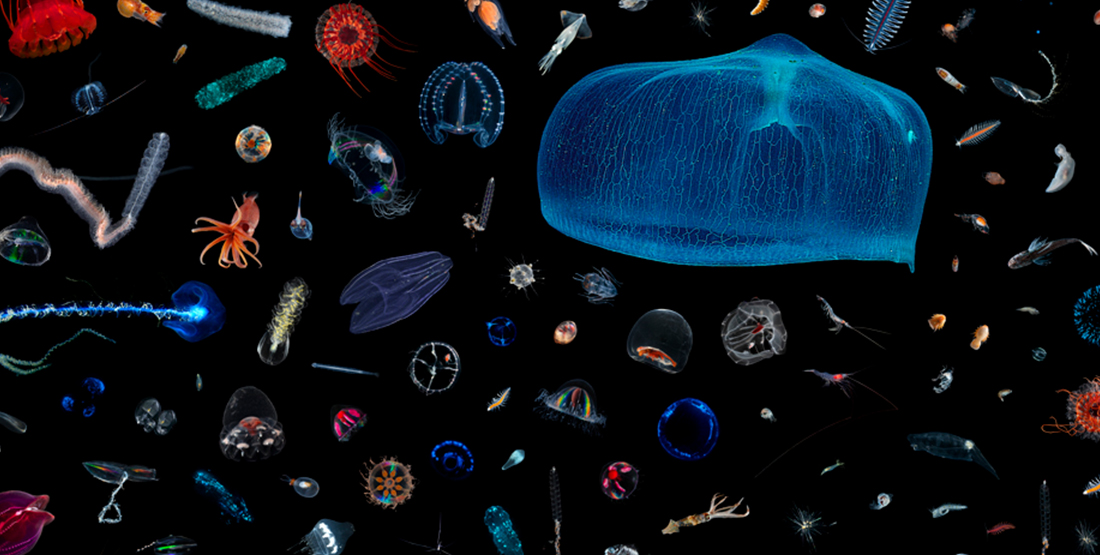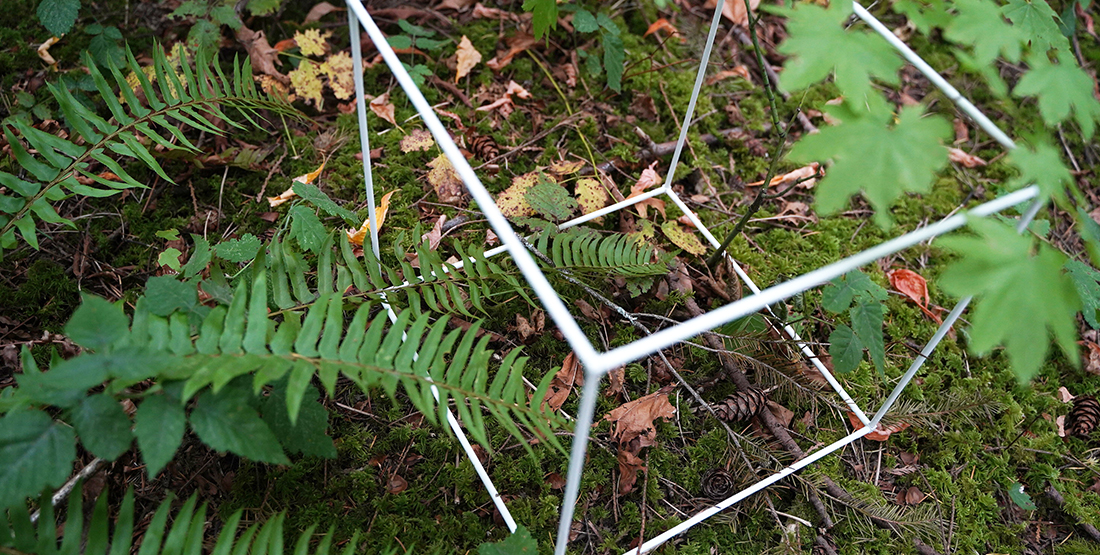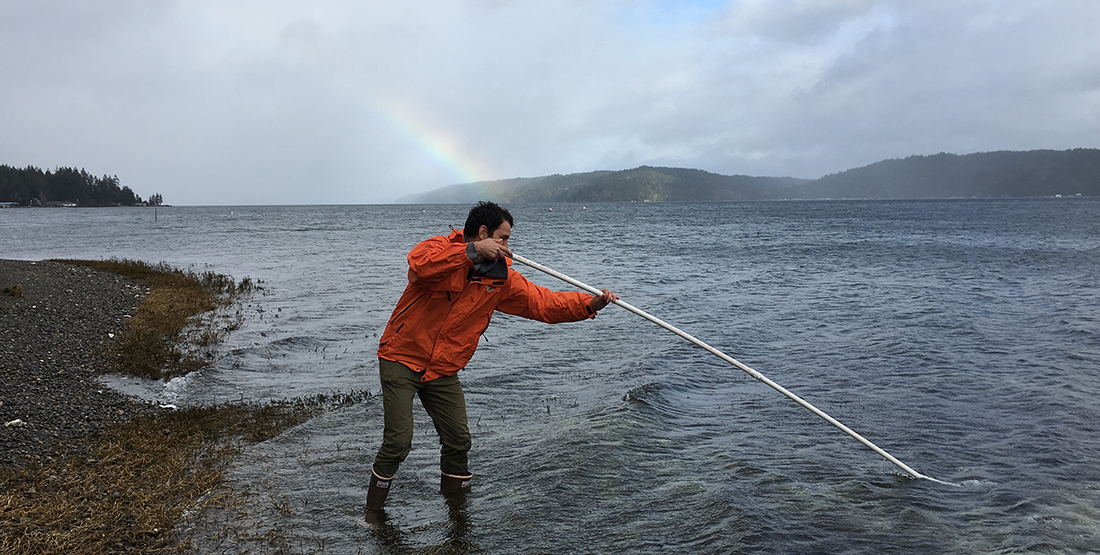On view from February 12 – July 17, 2022, the exhibition reveals the amazing variety of life that can be found using “biocubes”—one-cubic-foot frames used to survey the animals and plants living in an ecosystem. Featuring stunning photographs by David Liittschwager, the exhibition includes biocube-related objects and tools, real museum collections, hands-on interactives, and videos. The exhibition is organized by the Smithsonian Institution Traveling Exhibition Service (SITES) in collaboration with the Smithsonian’s National Museum of Natural History and is supplemented with Burke Museum research, stories, and collections.
Biocubes featured in the exhibition were placed in environments across the globe to learn what forms of life, both known and unknown, could be found in the cube during a 24-hour period. In addition to exploring life through the exhibition, visitors are also invited to uncover the biodiversity in their backyard by creating and monitoring their own biocube and sharing their results with others.
Life in One Cubic Foot investigates life from a variety of environments, like the coral reefs of French Polynesia and the alien mid-water ocean off the coast of California to the more nearby locales, like Seattle’s Seward Park. Hundreds of different organisms ranging in size from the head of a pin to the full size of the biocube are featured in the exhibition through collages of photographs, models, museum specimens, interactive elements, and exhibition videos.
Biocubes in the exhibition were not only used by scientists to examine what is already known about life on Earth but also to spotlight how much biodiversity remains for aspiring scientists to document. Scientists estimate that there are more than 1 million species still unknown or unnamed by scientists. Environmental changes, like climate change and other human-made forces, are taking their toll on life around the world, both recorded and unidentified. Global efforts to understand the impact of these changes and answer questions about how to manage the complex dynamics of wildlife and natural resources will be improved as gaps in the tree of life are filled.
The Burke Museum is supplementing the exhibition by featuring additional ways of surveying and understanding biodiversity through active, cutting-edge research at the Burke and University of Washington. Displays include how environmental DNA extracted from water samples is another tool to document biodiversity in Puget Sound eelgrass beds. In addition, visitors are encouraged to break outside the box with UW researchers from biology and anthropology who are taking a holistic multidisciplinary view of biodiversity in Oceania through a program called PAC-ISLES. By focusing on the connections between land, sea, people and organisms that transcend the confines of one cubic foot, the PAC-ISLES program seeks to advance our understanding of the biological and cultural diversity of the Pacific Islands through the equitable exchange of information between Islanders and students, building capacity for a new generation of Pacific Islander researchers both at UW and in the community.
Also enjoy educational activities connected to the exhibit for both families and classrooms. Search for slugs and snails in an immersive forest floor and play hands-on games, animal identification, and crafts in our Experience Alcoves throughout the building. Educators can also join us for an upcoming virtual educator event where you can learn about how to bring community science into the classroom by doing biocubes with students to support learning across disciplines. We’ll also share other Burke resources that tie in with the exhibit content and introduce a new, local community science project coming from the Burke about land slugs and snails that students can get involved in, too. Stay tuned for virtual education event information at burkemuseum.org/calendar.
After seeing how scientists use the concept of one cubic foot to understand the diversity of life in the field, visitors can learn how biocubes can be used to uncover life in more familiar places. They are invited to build their own biocube and by studying and sharing discoveries from their neighborhood habitats. Visitors can explore the National Museum of Natural History’s website to watch a video about biocubes and learn how to build, deploy and study their own biocube. They may also share their findings with the greater scientific community.
Life in One Cubic Foot beautifully conveys the incredible diversity of natural life around the world.
Press seeking high resolution images and interviews, contact burkepr@uw.edu.
Burke Museum exhibit supporters: 4Culture, Hugh and Jane Ferguson Foundation, Horizons Foundation, Kym Aughtry, Marrella Fund, Peach Foundation, Tom Alberg and Judi Beck.





